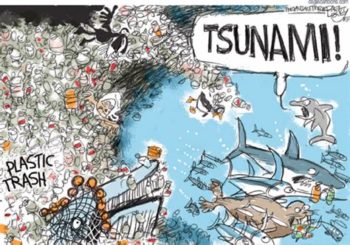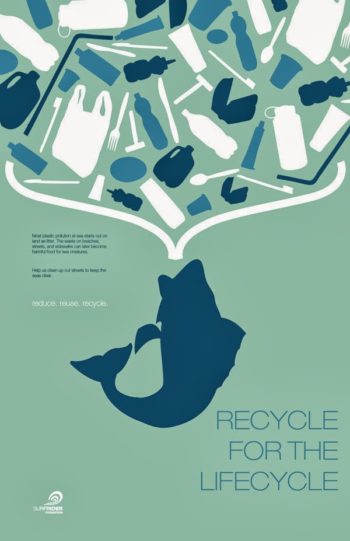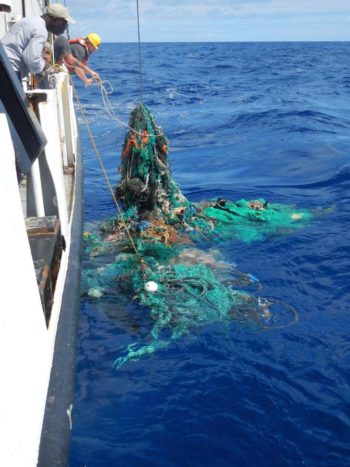 HEALING MOTHER EARTH
HEALING MOTHER EARTH
Hello Everyone and Welcome to another FACTUAL FRIDAY.
We celebrated EARTH DAY earlier this week so, accordingly, today’s Blog is devoted to our beloved MOTHER EARTH and her HEALTH and WELLNESS.
There is a movie from the 1960s called “The Graduate.” In this classic film, the main character who has just graduated from college, receives advice about choosing a career. A man approaches the recent graduate, puts a hand on his shoulder and says, “One word. Plastics.”
Why? Well, because going into the business of plastics would secure this graduate’s career forever. Why? Because, plastics were considered a “wonder material.” Why? Because, plastics last forever. Literally.
One of the greatest hazards our planet now faces is the accumulation of plastic in all its wasteful forms. The US Department of Energy’s National Renewable Energy Laboratory – known as the NREL – has stated that 8 million metric tons of plastic waste enters our planet’s oceans each year. This is creating huge man-made islands of garbage, the mass of which is estimated to equal the mass of fish in the ocean by the year 2050.
In fact, according to a three-year study published in Scientific Reports last month, there is an enormous pile of trash in the Pacific Ocean that experts have dubbed the “Great Pacific Garbage Patch.” Growing faster than expected, this pile of refuse appears to be three times the size of France and more than twice the size of Texas. Yikes!
And, here are just a few facts to drive this point home:
- Ninety percent of all trash floating on the ocean’s surface is plastic, with about 46,000 pieces of plastic per square mile.

- One million sea birds and 100,000 marine mammals are killed each year by plastic in our oceans.
- We have produced more plastic in the last ten years than in the last century.
- Fifty percent of our plastic is used once and then thrown away.
- Enough plastic is thrown away each year to circle the earth four times.
- Worldwide, more than one million plastic bags are used every minute.
Okay, so that’s some of the bad news. But, hang on, because here’s the good news.
A few years ago, researchers from NREL and Britain’s University of Portsmouth were studying a natural enzyme they found in a waste recycling center in Japan. Their intent was to simply study the structure of this enzyme, but they accidentally engineered an enzyme that is able to “eat” plastic.
Known as Ideonella Sakaiensis 201-F6, this enzyme consumes polyethylene terephthalate or PET, a compound that was patented in the 1940s and is used today in millions of tons of plastic bottles.
This enzyme also can degrade polyethylene furandicarboxylate or PEF, which is being used as a replacement for glass beer bottles. And, even though PEF plastics are bio-based, they are not biodegradable and still end up as waste in landfills and in the oceans.
The researchers are quick to point out that while the ability of this tiny enzyme to reduce plastic waste is modest, the implication of the discovery is enormous.
Just imagine how an army of plastic-eating enzymes could reduce our carbon footprint on the planet and move us closer to a viable recycling solution for the ever-growing and monumental mountain of plastic waste. Now, that is really exciting!
And, in the meantime, here are a few simple ways we can do our part to reduce plastic waste and help heal our planet:
- CHOOSE TO REUSE. Cloth bags and metal or glass containers are reusable, inexpensive and locally available.
- BROWN BAGGING IT? Pack that PB & J and juice in a reusable lunch bag or box replete with a thermos.
- A GO-TO MUG FOR YOUR GO-TO PLACES. Bring your own mug to the coffee shop, restaurant or smoothie salon to reduce the use of plastic cups, straws and lids.
- IT’S A WRAP. Forget traditional plastic wraps and bags in the kitchen. Keep food fresh with one of the new biodegradable products made from plant material and essential oils.
 No one could have predicted 60 years ago that the use of plastic would result in millions of tons of waste choking our planet and its waters. No one knew that the “wonder material” of the 20th Century would become the ecological nightmare of the 21st Century.
No one could have predicted 60 years ago that the use of plastic would result in millions of tons of waste choking our planet and its waters. No one knew that the “wonder material” of the 20th Century would become the ecological nightmare of the 21st Century.
But, now that we know, we need to do something about it.
The scientific community that created the plastic problem, of course, must now use the same knowledge and technology they used to create the problem to solve the problem.
And we as individuals, the inhabitants and caregivers of this planet, also must do everything we can to responsibly recycle the plastic we have today, reduce our overall use of plastic over time, avoid single use plastic bottles and decrease our total production of waste.
REMEMBER, THERE IS NO PLANet B.
Together, WE CAN CHANGE THE WORLD. Not all at once, perhaps. But, gradually — one conscious day at a time. Every small step matters and SMALL STEPS LEAD TO BIG CHANGES!
Thanks again for joining me everyone. Until next time, stay in GOOD HEALTH and . . .
TAKE THE COURSE AND TAKE CHARGE!




Leave a Comment